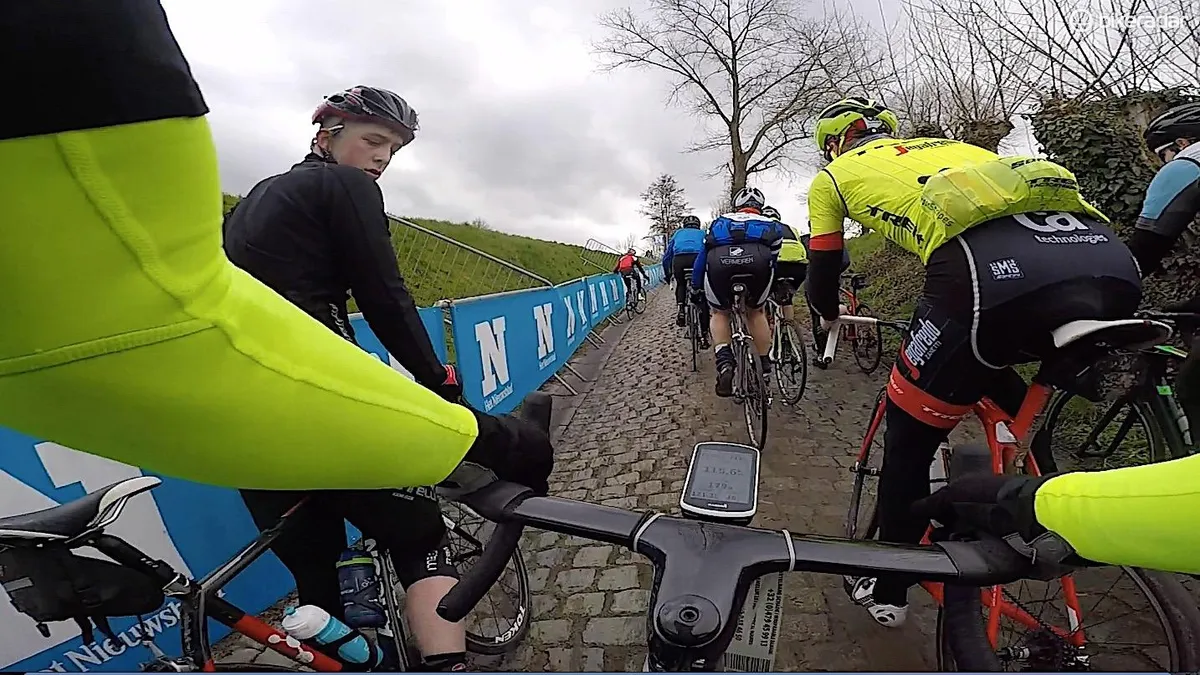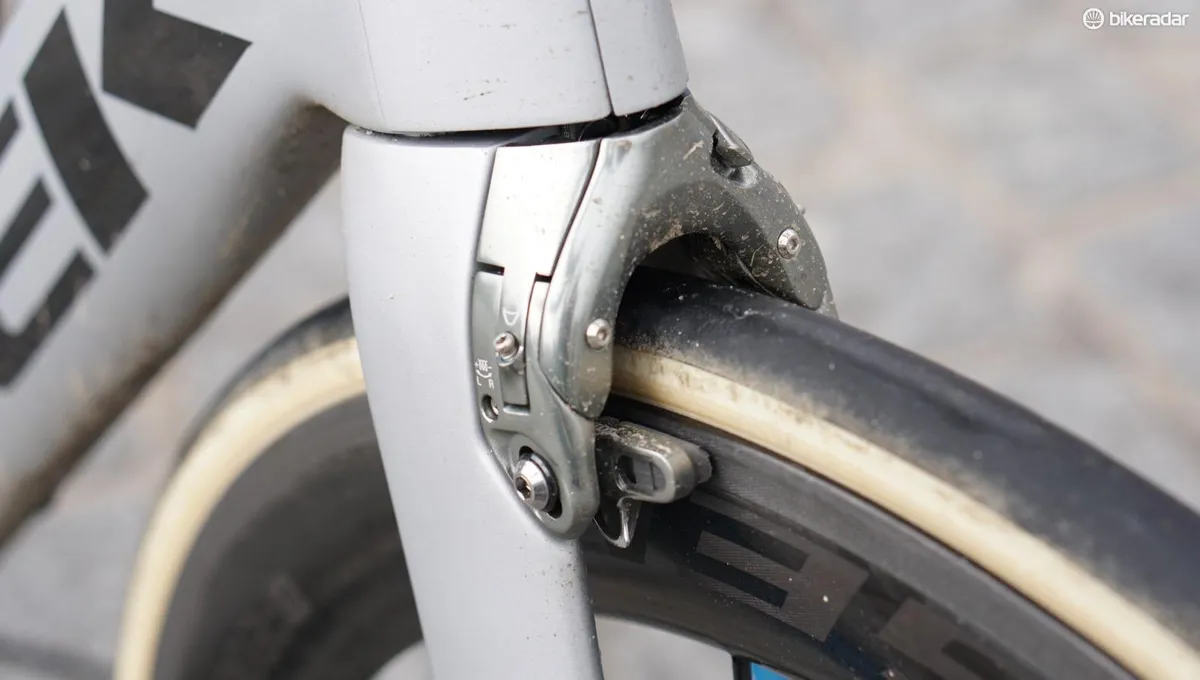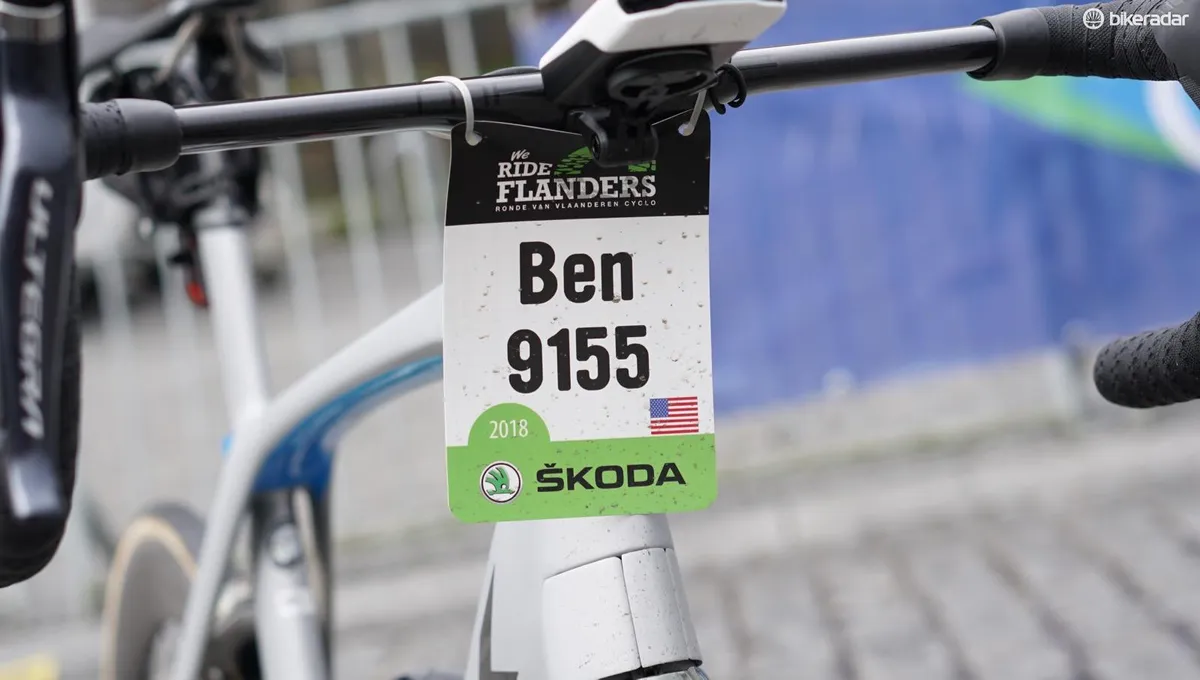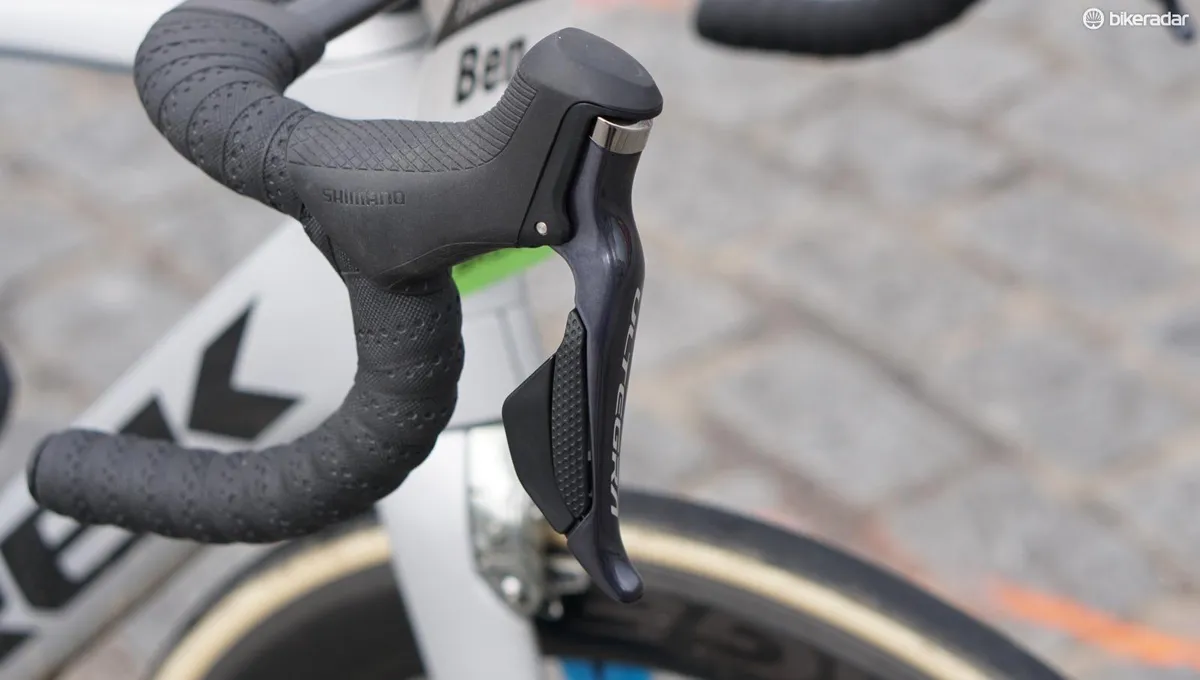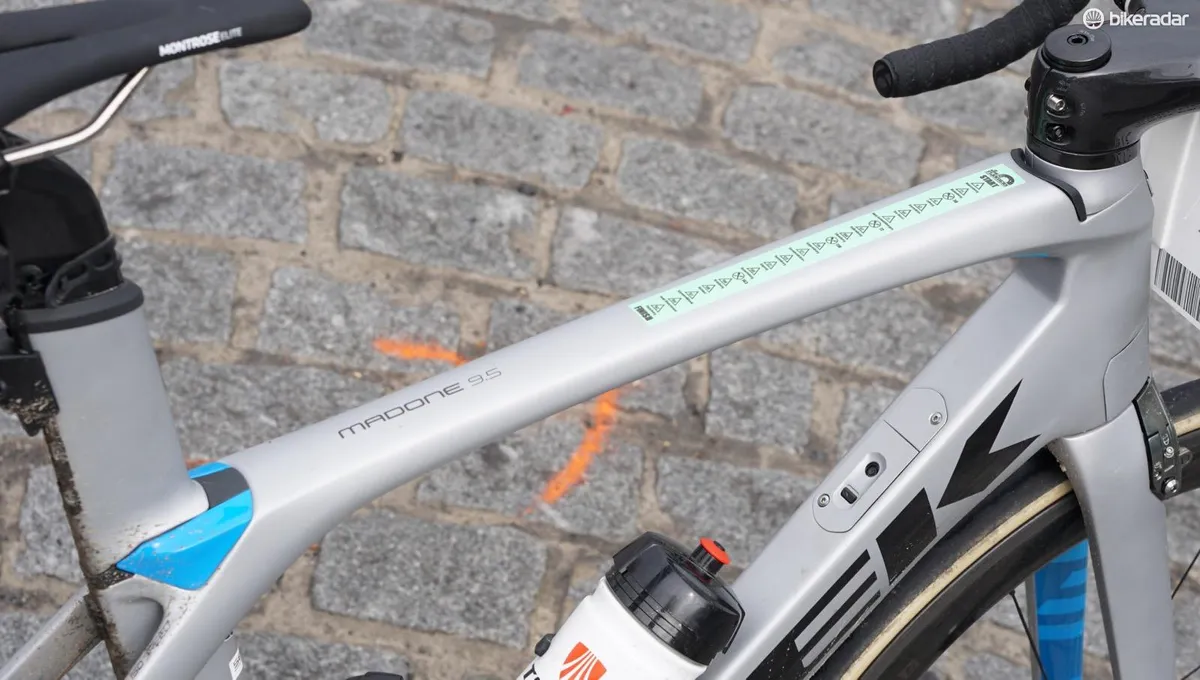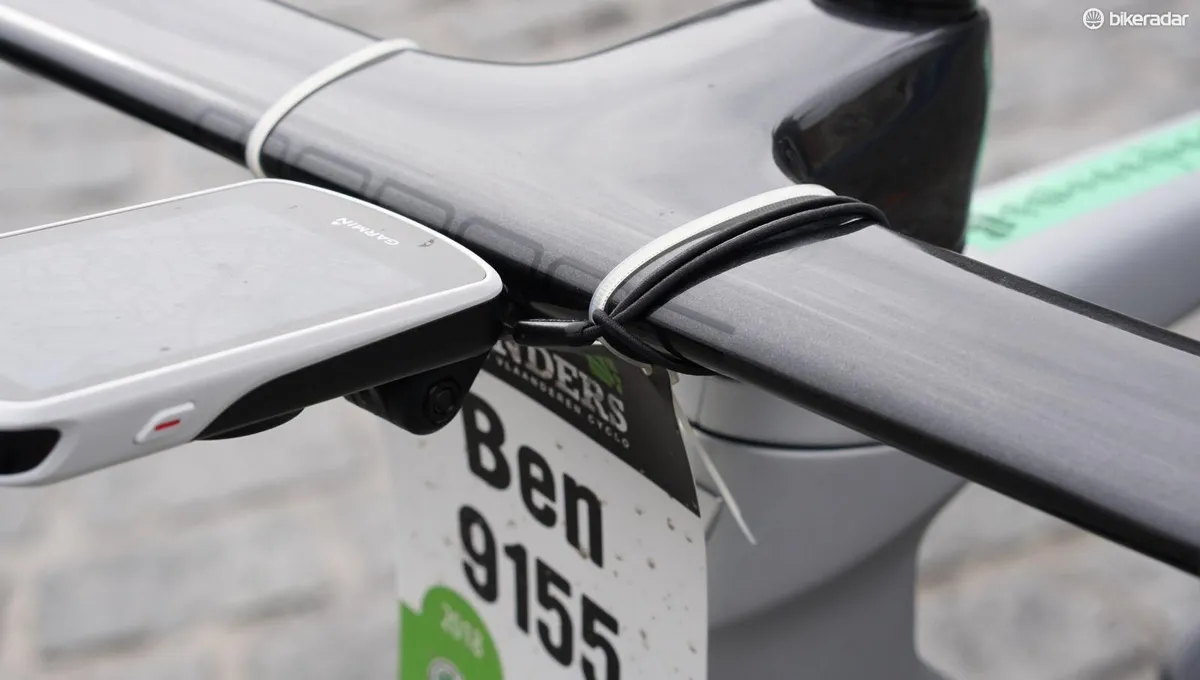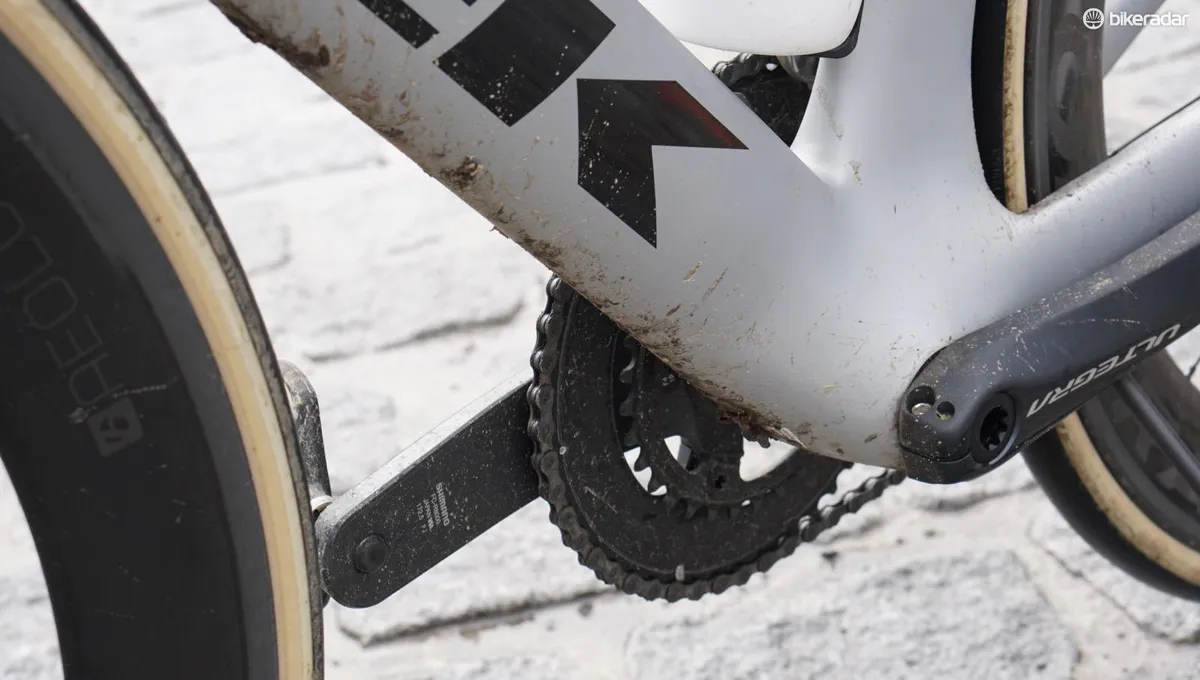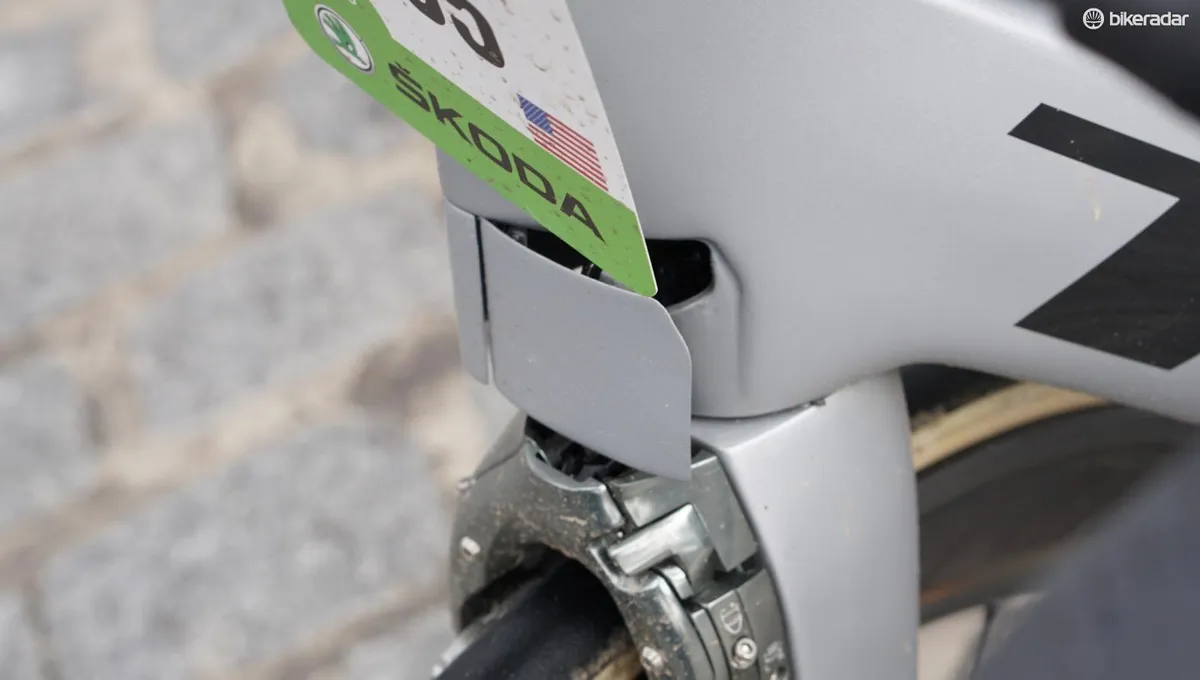I love the Tour of Flanders sportive. Riding the same slippery cobbled climbs as the pros fly up the day after in the Ronde van Vlaanderen, some 16,000 riders tackle the Belgian gran fondo. I am always eager to join the throngs winding through the tiny paved, stone roads, and this year I borrowed a Madone aero bike that Trek set up with its new Aeolus XXX 6 carbon clinchers.
An aero horse for the cobbled course
- The course: Tour of Flanders cyclo sportive, 144km / 90mi, 1,500m / 5,000ft elevation, 16 climbs, mostly cobbled, plus 4 cobbled flat sections (my Strava from the day)
- The horse: Trek Madone 9.5 with Shimano Ultegra Di2, 50/34 & 11-28, Bontrager Aeolus XXX 6 wheels, Bontrager R4 25mm clinchers, Garmin Vector 3 power-meter pedals and Edge 1030 computer
- The goal: Have fun, stay upright, ride all the climbs
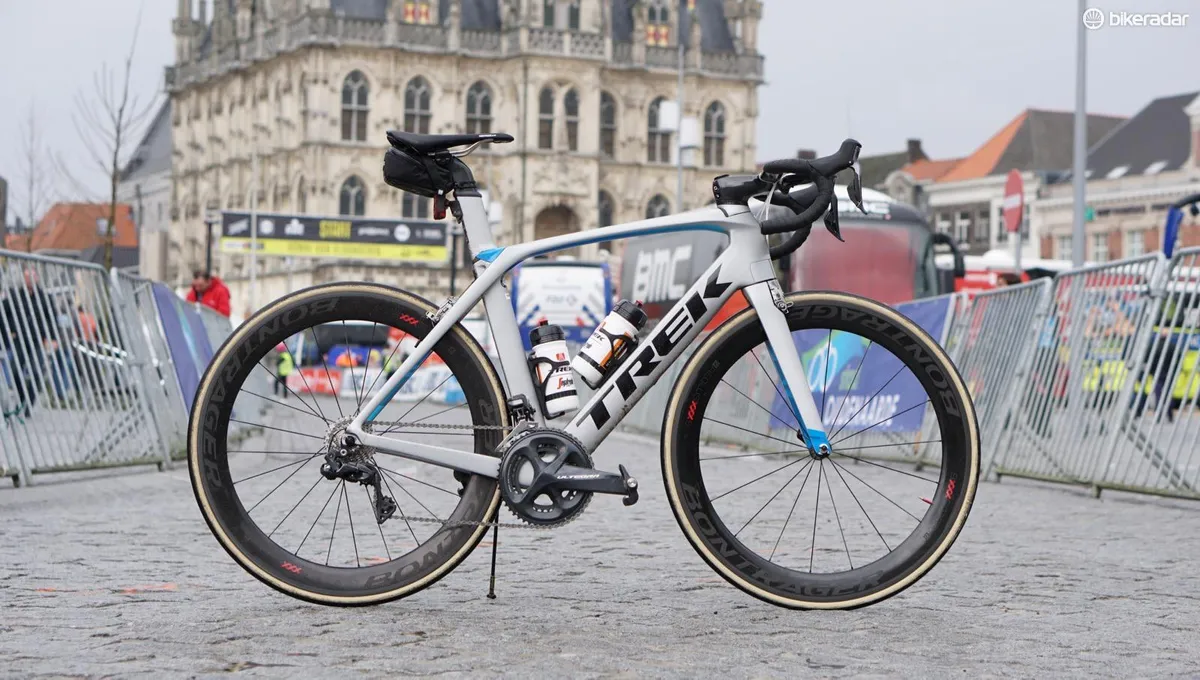
From monstercross to aero wheels for cycling's biggest party
In years past, I have ridden the Flanders course on a variety of bikes, from endurance bikes like the original Specialized Roubaix, Bianchi Infinito and Lapierre Sensium to new-school bikes like the Cannondale Synapse with Force 1 and disc brakes to a Mason Bokah with enormous 47mm tubeless tires. (Did I mention that I love the Flanders sportive?)
While some gran fondos are race-like - with a mass start and a timed finish, the Flanders sportive is absolutely not. You can start whenever you like, and no one cares when you finish. The point is to experience the hellingen and the kassein - the hills and the cobbles. With 16,000 people out on course and ample aid stations supplying drinks, food, fruit and, of course, waffles, it's a one big cycling party.
- Cannondale Synpase with SRAM 1x, 404 Discs for Flanders sportive
- BMC GF01 for Flander sportive
- Four endurance bikes put to the test on the cobbles (VeloNews, 2011)
On the rare dry years, getting up the narrow cobbled climbs that can kick to 20% is a challenge. Besides the basic physics of lugging your own bike and body up sharp hills on bumpy stones, there is the matter of sharing space with many of your 16,000 closest friends. On wet years, the steepest hills like the Koppenberg and the Paterberg are downright ridiculous. Rear wheels spin out, feet and sometimes entire bodies go down, and chaos ensues. Walking uphill on wet cobbles in road cleats? Also ridiculous.
So, in light of this, what is the point of an aero bike with deep aero wheels? For fun, of course! Also, it proved to be a good testing ground for a category of machine typically thought of as harsh on smooth pavement, nevermind cobbles.
IsoSpeed and integrated bars on cobbles
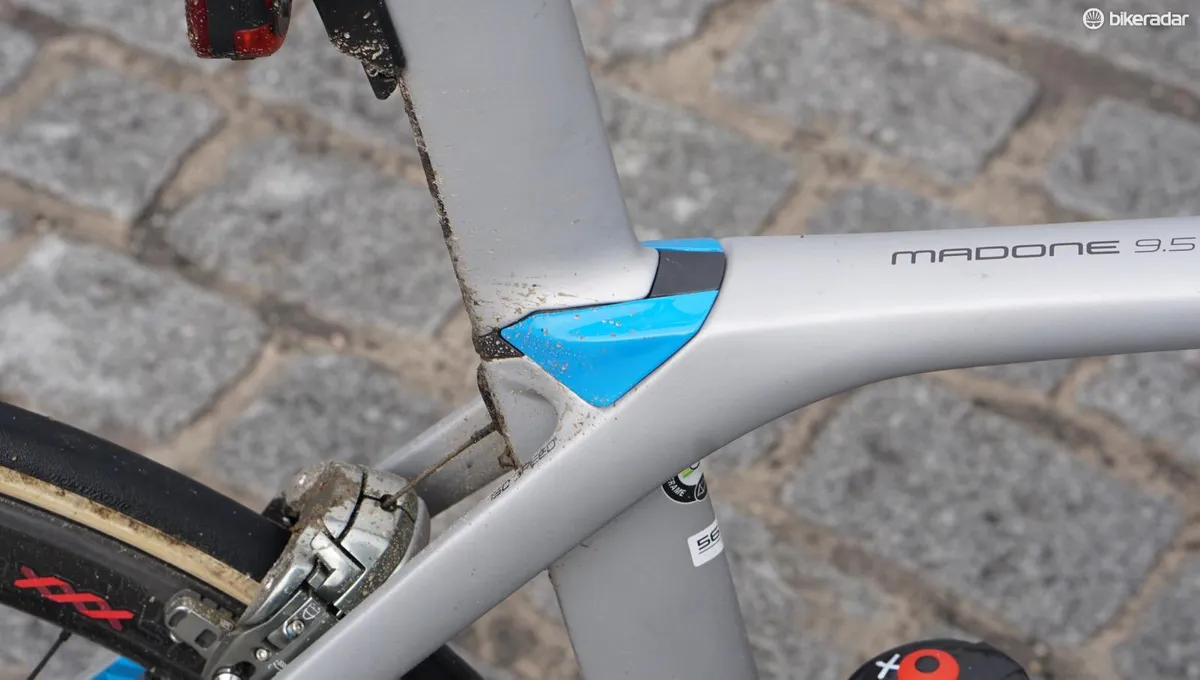
I'm a big fan of Trek's IsoSpeed Decoupler, which lets not only the seatmast but some of the seat tube bow to absorb road chatter. Trek's latest Domane SLR is the best endurance bike out there, in my opinion. The Madone incorporates the IsoSpeed at the rear, for a much, much smoother ride than most aero bikes. Still, it is an aero bike, with an enormous down tube and a massive integrated bar/stem to boot.
I was surprised at how relatively comfortable it was on the cobbles. I would still pick a Domane with round bars over a Madone with an aero road bar for my amateur antics, but I could see why Trek-Segafredo pros go with the Madone for racing Flanders. Trek's Mads Pedersen rode a hugely impressive race, riding solo in for second after being in what looked to be a no-hope break earlier. An aero setup is a no-brainer for a situation like that.

While Pedersen had the integrated Madone bar/stem setup, many of his teammates opted for a Madone with round bars.
60mm Bontrager Aeolus XXX 6 wheels with 25mm clinchers on cobbles
I have been riding the Aeolus XXX 6 clinchers at home in Colorado for about a month — you can read my review here — but Colorado paved and dirt roads are a far cry from Flemish cobbles.
Bontrager engineers claim to have built some compliance into the wheels, and they do feel a bit less harsh than standard 60mm carbon rims, but there is no mistaking them for box-section alloy hoops.
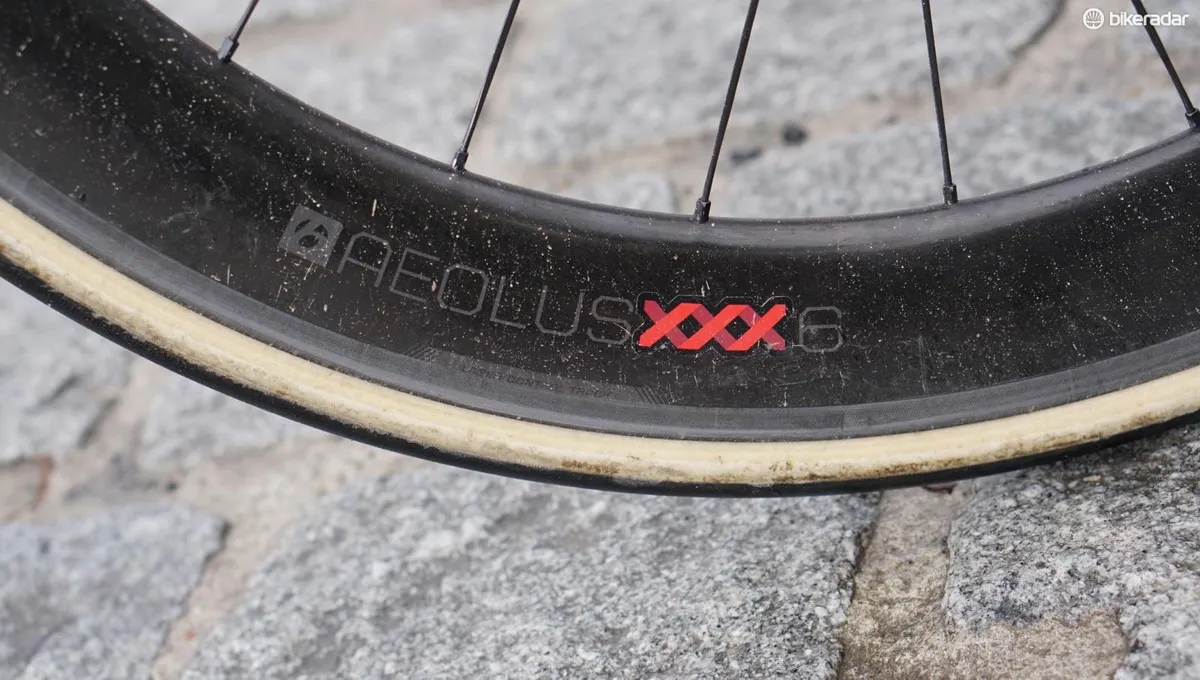
What impressed me most about the wheels was how they didn't pinch flat. Besides the rattling of the stones, I also plowed straight into a few hard-edged potholes, causing horrible carbon-on-cement sounds but no flats. With a massive 28mm rim width at the brake track, the rim almost engulfs a 25mm tire. While ENVE makes some claims about its M525 Gravel wheels being pinch-flat proof, Bontrager does not. But it seems something similar is going on here.
For my money, I'd go with 28mm or wider tires for Flanders, for the extra cushioning. But the R4 clinchers are supple for their width. You can read about our lab testing of the R4 and other top clinchers here.
Also, news flash: aero wheels are fast at speed. I really enjoyed tucking and zooming down some of the steeper descents. While weight is a factor for pros like Petersen, I'd be happy to have disc brakes for carbon wheels in the wet.
Shimano Ultegra Di2 with a compact crank
I'm a big fan of Shimano Di2, and, as with the mechanical groups, it is hard to discern the difference between Dura-Ace and Ultegra. Full disclosure: I had to look at the bike before typing this to make sure it was Ultegra and not Dura-Ace.
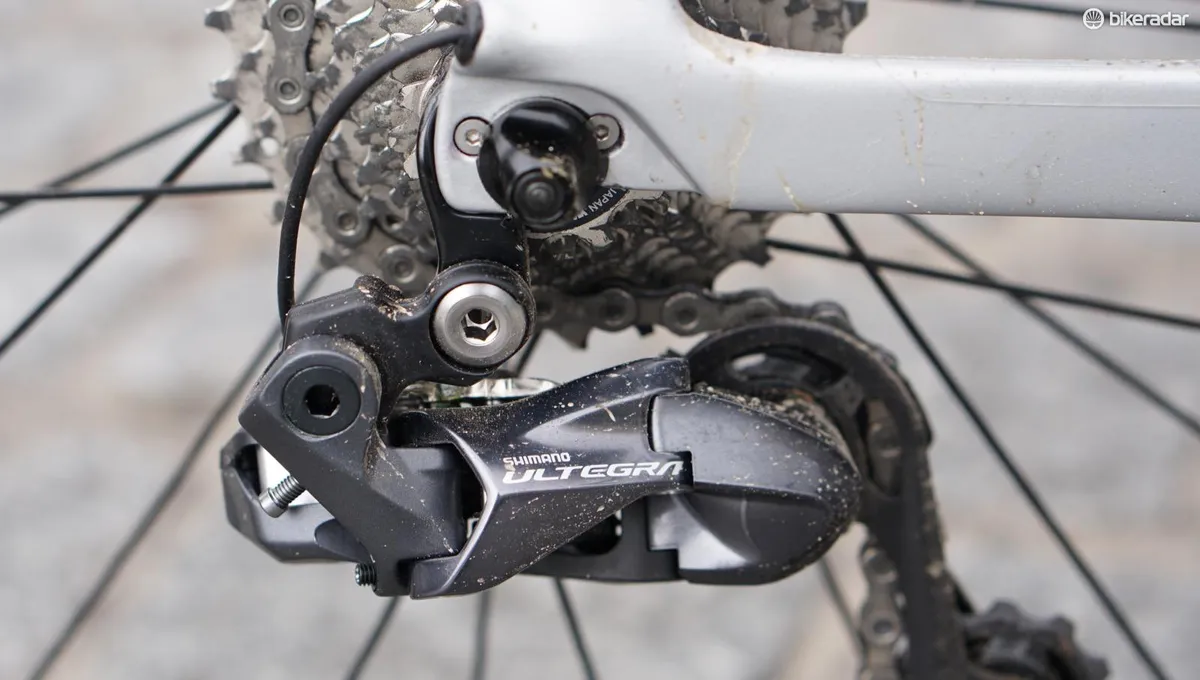
Some people - looking at you, Fabian Cancellara and Katie Compton, make a stink about Di2 buttons being difficult to operate on rough terrain. For me, I seldom ride cobbles, for one, and when I do I am not shifting much. For the climbs, it almost always goes and stays in the easiest gear! But as so much of the pro peloton is on Di2 these days, it appears the group can indeed be shifted on bumps.
The compact crank is certainly not pro issue, but is just the ticket for the Flanders sportive, where even if you do have the legs to turn a bigger gear, the crowds on the climbs make a smaller gear an advantage. For me, well, see above about gear choice...

Garmin Vector 3 pedals on cobbles
I have been testing Garmin's latest power-meter pedals for a number of months, and I'm quite impressed. The first two iterations were pretty good, but I hated the dangling pods and the occasional oddities in power recording. Testing against a PowerTap, Stages LR and a Kickr, among other things, the Vector 3s have proven reliable. And unlike the Shimano power meter and the Specialized Power cranks, the left/ride data on the Vector 3s is also spot on.
But the reason I brought the Vector 3s to Belgium is simpler: they are pedals. It's a two-in-one travel solution.

I prefer Shimano pedals and use those at home. I also use a Stages left crank on a lot of test bikes at home, in part because that way I can use Shimano pedals. But you just can't beat the ease of a power meter that lives in pedals. Do you need a power meter for a fondo? Yes, you absolutely do. Otherwise, how will you know whether you're having any fun? (Seriously though, I just like to nerd out on data sometimes.)
Garmin Edge 1030 battery life on a 6-hour day
I brought a big 1030 with me because, as discussed, I need data to measure my enjoyment. Also, I like to get back to my hotel/car/beer without wandering around like Moses in the desert. We've talked about the improved 1030 battery in our review, but anecdotally, this 5.5hr ride took the battery from 95% or so to 65%.

The 1030 came with a US base map installed, but I needed to buy a European base map for $50 / €50. Wahoo's Elemnt, by contrast, has most countries covered in its stock set-up. Granted, the screen is black and white and the navigation isn't Garmin-level, but it's something worth considering.
Gore Oxygen Classics as Plan A, with a rain jacket as insurance
As a guy who grew up in a desert (New Mexico), I'm a little intimated by Belgian weather. I packed an enormous suitcase full of all matter of rain gear, including GripGrab's excellent Race Thermo booties and gaiters.
But as the forecast looked cold to cool but mostly dry, I went with the Gore Oxygen Classics Windstopper jersey, wool base layer and warmers. Besides clearly having the right name for the day, the Gore jersey is a bit like a thin Castelli Perfetto: it fits and mostly feels like a normal jersey, but with a good Windstopper chest.
I brought a Castelli rain jacket just in case, but didn't need it.
Finally, after overheating in full-on rain booties the previous two rides, I opted for a ghetto halfway solution: the ends of plastic bags over just the toes of my socks inside the shoes. Not quite as nice as thermal toe covers, but hey, make do, right?
Bottom line - you can and should do the Flanders sportive on any bike, but...
With 16,000 folks riding the sportive, you see all manner of bikes and gear out on course. It's awesome, and reinforces what you already know: just getting out there on a bike - any bike - is the thing. Nicer stuff is nicer, but really it's about the rider.
If you can somehow make it to Belgium, I absolutely recommend doing the sportive. There are a few different length options, including the big 229km ride from Antewerp. I recommend one of the loops that start and finish in Oudeenarde, because they are so much simpler logistically (no waiting for a bus in your sopping chamois) and because you can still get all the climbs in.
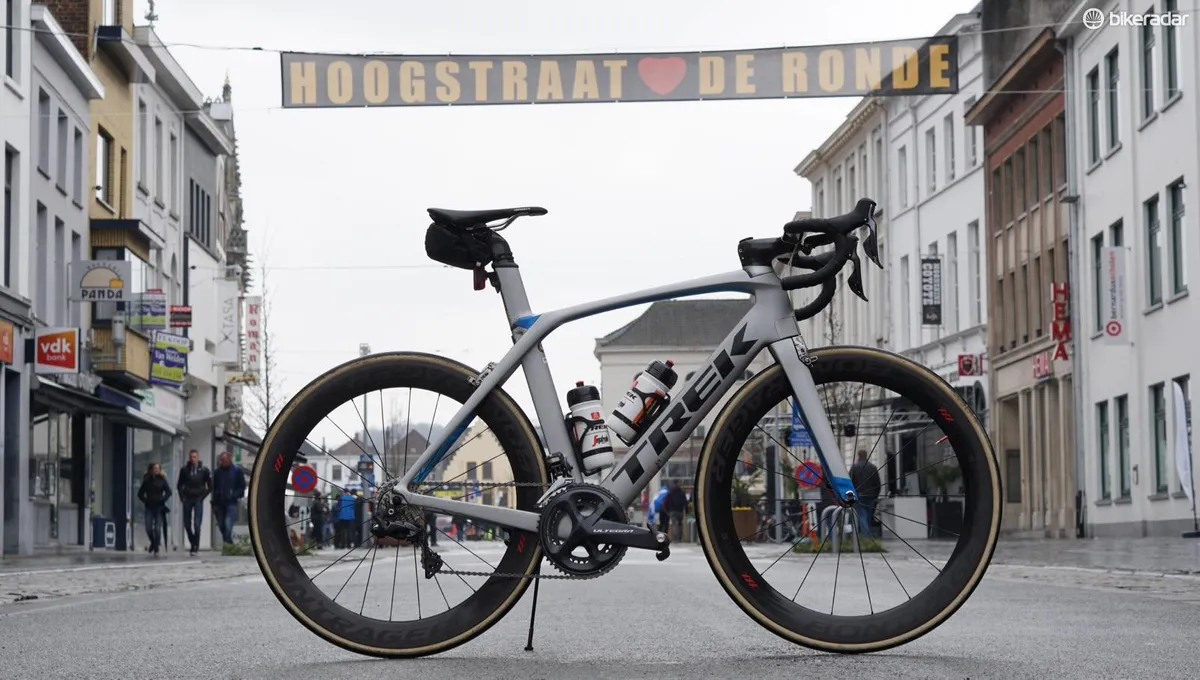
As for a bike, I'd recommend something with a low gear (a compact crank is your friend, friends), wide tires and a saddle you love.
If you can make it with friends, all the better. If not, you'll forge some new ones as you battle the hellingen together.
